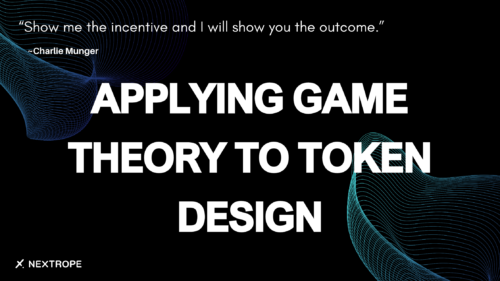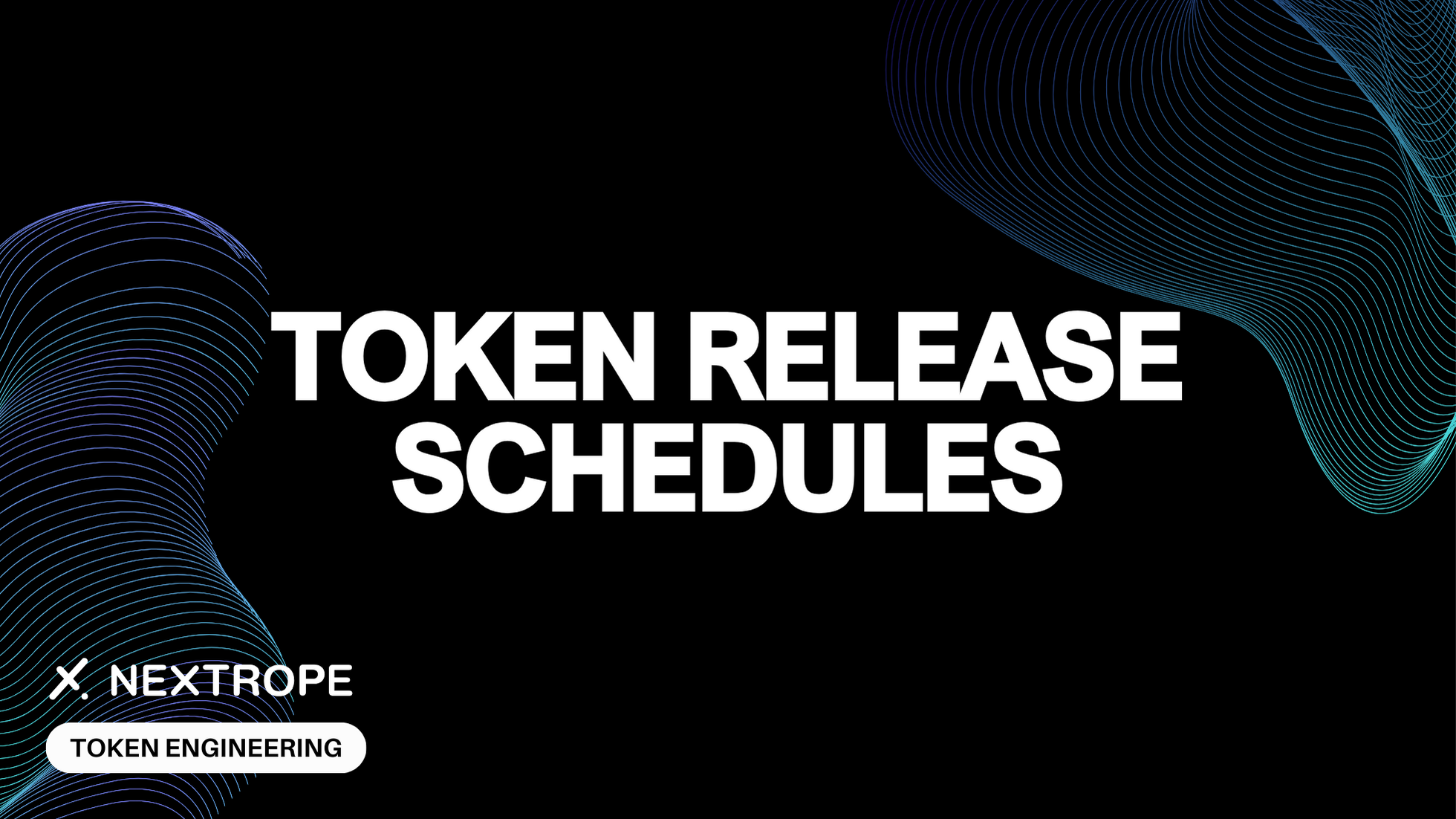Blockchain technology allows for aligning incentives among network participants by rewarding desired behaviors with tokens.
But there is more to it than simply fostering cooperation. Game theory allows for designing incentive-machines that can't be turned-off and resemble artificial life.
Emergent Optimization
Game theory provides a robust framework for analyzing strategic interactions with mathematical models, which is particularly useful in blockchain environments where multiple stakeholders interact within a set of predefined rules. By applying this framework to token systems, developers can design systems that influence the emergent behaviors of network participants. This ensures the stability and effectiveness of the ecosystem.
Bonding Curves
Bonding curves are tool used in token design to manage the relationship between price and token supply predictably. Essentially, a bonding curve is a mathematical curve that defines the price of a token based on its supply. The more tokens that are bought, the higher the price climbs, and vice versa. This model incentivizes early adoption and can help stabilize a token’s economy over time.
For example, a bonding curve could be designed to slow down price increases after certain milestones are reached, thus preventing speculative bubbles and encouraging steadier, more organic growth.
The Case of Bitcoin
Bitcoin’s design incorporates game theory, most notably through its consensus mechanism of proof-of-work (PoW). Its reward function optimizes for security (hashrate) by optimizing for maximum electricity usage. Therefore, optimizing for its legitimate goal of being secure also inadvertently optimizes for corrupting natural environment. Another emergent outcome of PoW is the creation of mining pools, that increase centralization.
The Paperclip Maximizer and the dangers of blockchain economy
What’s the connection between AI from the story and decentralized economies? Blockchain-based incentive systems also can’t be turned off. This means that if we design an incentive system that optimizes towards a wrong objective, we might be unable to change it. Bitcoin critics argue that the PoW consensus mechanism optimizes toward destroying planet Earth.
Layer 2 Solutions
Layer 2 solutions are built on the understanding that the security provided by this core kernel of certainty can be used as an anchor. This anchor then supports additional economic mechanisms that operate off the blockchain, extending the utility of public blockchains like Ethereum. These mechanisms include state channels, sidechains, or plasma, each offering a way to conduct transactions off-chain while still being able to refer back to the anchored security of the main chain if necessary.
Conceptual Example of State Channels
State channels allow participants to perform numerous transactions off-chain, with the blockchain serving as a backstop in case of disputes or malfeasance.
Consider two players, Alice and Bob, who want to play a game of tic-tac-toe with stakes in Ethereum. The naive approach would be to interact directly with a smart contract for every move, which would be slow and costly. Instead, they can use a state channel for their game.
- Opening the Channel: They start by deploying a "Judge" smart contract on Ethereum, which holds the 1 ETH wager. The contract knows the rules of the game and the identities of the players.
- Playing the Game: Alice and Bob play the game off-chain by signing each move as transactions, which are exchanged directly between them but not broadcast to the blockchain. Each transaction includes a nonce to ensure moves are kept in order.
- Closing the Channel: When the game ends, the final state (i.e., the sequence of moves) is sent to the Judge contract, which pays out the wager to the winner after confirming both parties agree on the outcome.
A threat stronger than the execution
If Bob tries to cheat by submitting an old state where he was winning, Alice can challenge this during a dispute period by submitting a newer signed state. The Judge contract can verify the authenticity and order of these states due to the nonces, ensuring the integrity of the game. Thus, the mere threat of execution (submitting the state to the blockchain and having the fraud exposed) secures the off-chain interactions.
Game Theory in Practice
Understanding the application of game theory within blockchain and token ecosystems requires a structured approach to analyzing how stakeholders interact, defining possible actions they can take, and understanding the causal relationships within the system. This structured analysis helps in creating effective strategies that ensure the system operates as intended.
Stakeholder Analysis
Identifying Stakeholders
The first step in applying game theory effectively is identifying all relevant stakeholders within the ecosystem. This includes direct participants such as users, miners, and developers but also external entities like regulators, potential attackers, and partner organizations. Understanding who the stakeholders are and what their interests and capabilities are is crucial for predicting how they might interact within the system.
Assessing Incentives and Capabilities
Each stakeholder has different motivations and resources at their disposal. For instance, miners are motivated by block rewards and transaction fees, while users seek fast, secure, and cheap transactions. Clearly defining these incentives helps in predicting how changes to the system’s rules and parameters might influence their behaviors.
Defining Action Space
Possible Actions
The action space encompasses all possible decisions or strategies stakeholders can employ in response to the ecosystem's dynamics. For example, a miner might choose to increase computational power, a user might decide to hold or sell tokens, and a developer might propose changes to the protocol.
Constraints and Opportunities
Understanding the constraints (such as economic costs, technological limitations, and regulatory frameworks) and opportunities (such as new technological advancements or changes in market demand) within which these actions take place is vital. This helps in modeling potential strategies stakeholders might adopt.
Causal Relationships Diagram
Mapping Interactions
Creating a diagram that represents the causal relationships between different actions and outcomes within the ecosystem can illuminate how complex interactions unfold. This diagram helps in identifying which variables influence others and how they do so, making it easier to predict the outcomes of certain actions.
Analyzing Impact
By examining the causal relationships, developers and system designers can identify critical leverage points where small changes could have significant impacts. This analysis is crucial for enhancing system stability and ensuring its efficiency.
Feedback Loops
Understanding feedback loops within a blockchain ecosystem is critical as they can significantly amplify or mitigate the effects of changes within the system. These loops can reinforce or counteract trends, leading to rapid growth or decline.
Reinforcing Loops
Reinforcing loops are feedback mechanisms that amplify the effects of a trend or action. For example, increased adoption of a blockchain platform can lead to more developers creating applications on it, which in turn leads to further adoption. This positive feedback loop can drive rapid growth and success.
Death Spiral
Conversely, a death spiral is a type of reinforcing loop that leads to negative outcomes. An example might be the increasing cost of transaction fees leading to decreased usage of the blockchain, which reduces the incentive for miners to secure the network, further decreasing system performance and user adoption. Identifying potential death spirals early is crucial for maintaining the ecosystem's health.
Conclusion
The fundamental advantage of token-based systems is being able to reward desired behavior. To capitalize on that possibility, token engineers put careful attention into optimization and designing incentives for long-term growth.
FAQ
- What does game theory contribute to blockchain token design?
- Game theory optimizes blockchain ecosystems by structuring incentives that reward desired behavior.
- How do bonding curves apply game theory to improve token economics?
- Bonding curves set token pricing that adjusts with supply changes, strategically incentivizing early purchases and penalizing speculation.
- What benefits do Layer 2 solutions provide in the context of game theory?
- Layer 2 solutions leverage game theory, by creating systems where the threat of reporting fraudulent behavior ensures honest participation.
 en
en  pl
pl 







